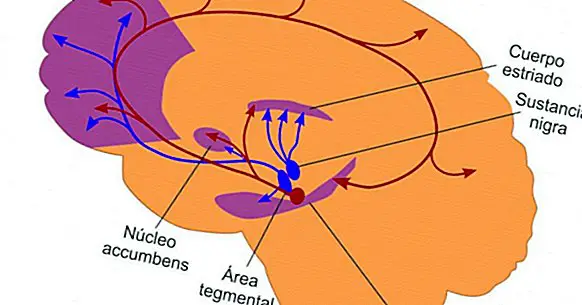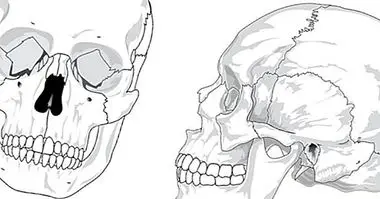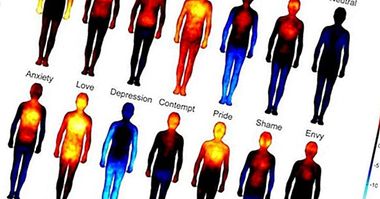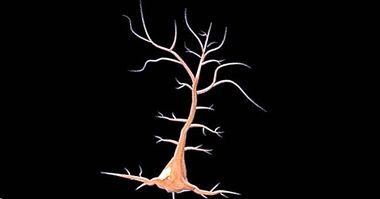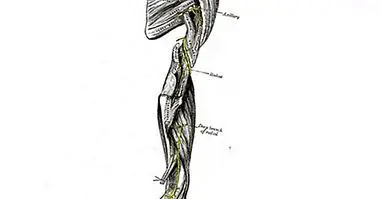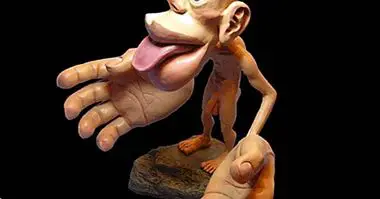Mesolimbic pathway (brain): anatomy and functions
The human nervous system is made up of millions of neurons, which connect with each other forming complex neural networks.
Different networks are usually responsible for transmitting different information, allowing the operation of various systems with distinctive functions. One of the most important routes for our survival is the mesolimbic pathway , which we will analyze throughout this article.
The mesolimbic pathway: one of the main dopaminergic pathways
Mesolimbic route is understood as one of the main cerebral dopaminergic circuits , which connects the mesencephalon with the limbic system going from the ventral tegmental area to the nucleus accumbens, connecting with other structures such as the amygdala and even the prefrontal cortex.
The mesolimbic pathway has been identified with the brain reward mechanism , including most of the structures that are part of it. Thus, it is a circuit of great importance for the development and functioning of the human being, being fundamental in the capture and experimentation of sensations of pleasure and gratification.
This allows us to get closer to the stimulation, allowing for example that we want to eat or maintain relationships due to the experience of satisfaction. In the same way. the correct functioning of this path allows us to learn by reinforcing our behavior, seeking to repeat the same actions in those stimulating situations similar to those that triggered their activation of gratification sensations. With this, it allows us to a great extent the learning and the conditioning of the behavior. It also has an important participation in aspects such as the management of emotions and the physiological reactions that derive from them, behavioral control, impulsivity and motivation.
Main structures involved
The mesolimbic path is not a structure in itself, but a set of them that work together forming a network through which information circulates.
There are numerous cortical and subcortical structures that are part of this path, resulting in the following some of the most remarkable.
1. Ventral tegmental area
This brain region is the starting point of the mesolimbic pathway, located in the brainstem . It is one of the areas with the highest number of dopamine receptors, participating in both mesolimbic and mesocortical pathways. The ventral tegmental area has an important participation in the maintenance of motivation, emotion and cognition, as well as in the experimentation of pleasure. The neurons in this area modulate the release of dopamine in other areas of the mesolimbic pathway.
2. Nucleus accumbens
Part of the basal ganglia, the nucleus accumbens is one of the most important structures of the cerebral reward circuit and the mesolimbic pathway. And it is that this nucleus controls to a great extent the release of dopamine in the brain. It is in this area that most drugs act, as well as one of the most linked to the processes of habituation and acquisition of addictions. Participates in the integration of emotion and motivation to transform them into actions, in addition to contributing to the management of aggression, memory and behavior planning (through its connection with the prefrontal).
3. Amygdala
The amygdala complex is an important part of the mesolimbic pathway, linking emotion with physiological responses and behavioral characteristics of his experimentation. It is the main nucleus that is responsible for emotional management, especially in the case of fear (which partly explains the sensations of fear generated by the hallucinations of subjects with schizophrenia) and aggressiveness. It also influences sexuality and the sensation of satiation.
4. Hippocampus
The hippocampus is one of the regions of the limbic system that is most associated with memory and learning, allowing the formation and recovery of memories and associating them with the emotional assessment that is made of the experience.
5. Nucleus of the terminal stria
Part of the limbic system, this nucleus groups together the set of fibers that connect the thalamus and amygdala. It is linked to the management of stress and sexuality (there are differences between sexes and sexual identities in this area).
6. Prefrontal cortex
The prefrontal cortex is one of the areas that govern the cognitive aspects of behavior , allowing the use of skills such as planning and inhibiting impulses. The mesolimbic pathway also connects with this part of the cerebral cortex.
Role in different disorders
A malfunction of the mesolimbic path, either due to hyperfunctioning or to the hypofunctioning of this , has been frequently linked to the experimentation of different mental disorders and behavioral alterations. In particular, some of the disorders to which this link has been most linked are the following.
1. Schizophrenia and other psychotic disorders
The main disorder with which it is associated, in schizophrenia has been observed that the presence of a hyperactivation of the mesolimbic pathway due to an excess of dopamine is linked to the appearance of hallucinations and other positive symptoms, such as restlessness, impulsivity and disorganized and chaotic behavior.
But not only in schizophrenia, but also has been linked to this pathway with the symptoms of other psychotic disorders such as chronic delusional disorder, schizophreniform disorder or acute psychotic disorder, among others. The mesolimbic route is in fact the main objective to which most neuroleptics point, and it is essential to work with it in order to solve problems of a psychotic nature.
2. Substance addiction and substance abuse
As indicated above, the mesolimbic pathway is also part of the brain reward circuit, which is associated with the experimentation of pleasure sensations. In this sense it emphasizes its importance when explaining the addictive process of drug addicts, which is due to the facilitation and agonism of dopamine that tend to generate a large number of substances.
In abstinence the level of dopamine produced by the brain naturally, contrary to what occurs in schizophrenia , it is insufficient to maintain normative functioning, with which symptoms such as discomfort appear and craving or desire to consume is generated.
3. Eating disorders
As a fundamental part of the brain reward circuit, the mesolimbic pathway also participates in the feeding process and it is linked to the sensations of pleasure that we feel when we eat. The activation of this pathway is closely linked to the presence of eating disorders that suppose a loss of impulse control, as occurs with binge eating in cases of bulimia and binge eating disorder.
Although obesity is not in itself a mental disorder, the excessive intake of food despite having satiated or as a response to the perception of anxiety and stress is also due in large part to the pleasure obtained through the activation of this route.
4. Other disorders
The dysfunction of the mesolimbic pathway has also been linked to the presence of problems related to aggressiveness and the control of impulses. In general, it is also linked to compulsive behavior, which may be affected by other disorders such as OCD or paraphilias.
Bibliographic references:
- Adams R, Victor M, Ropper A. (1999). Principles of Neurology Sixth Edition. Mexico D.F .: Mac Graw-Hill Interamericana.
- Haaga J, Lanzieri C, Sartoris D, Zerhouni E. (1996). Computed Tomography and Magnetic Resonance-Diagnosis by Total Body Image. Third edition. Barcelona: Mosby / Doyma Books.

